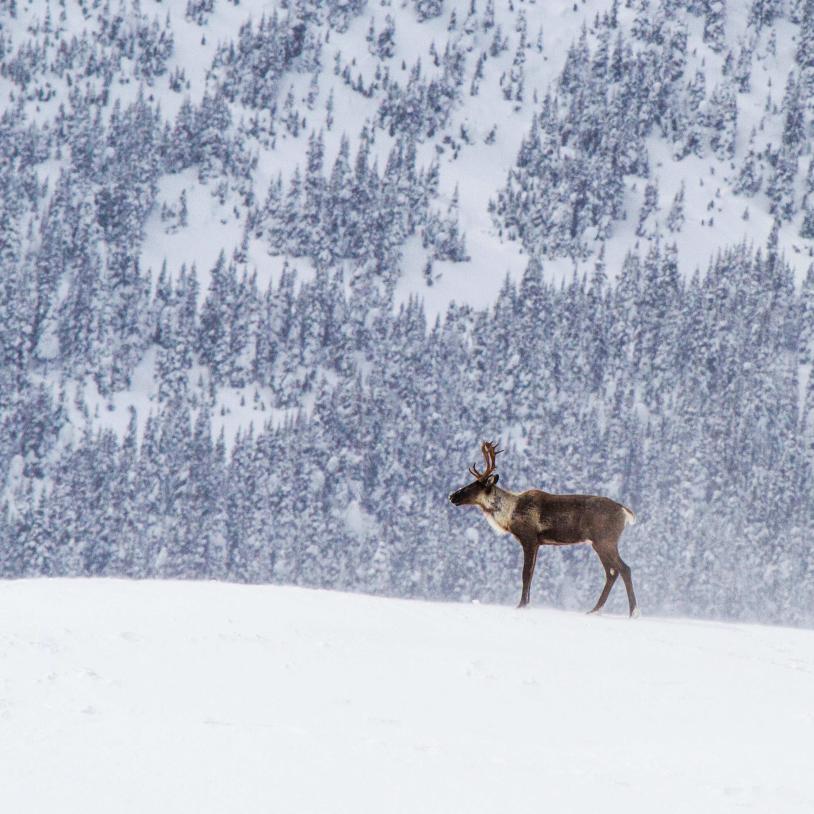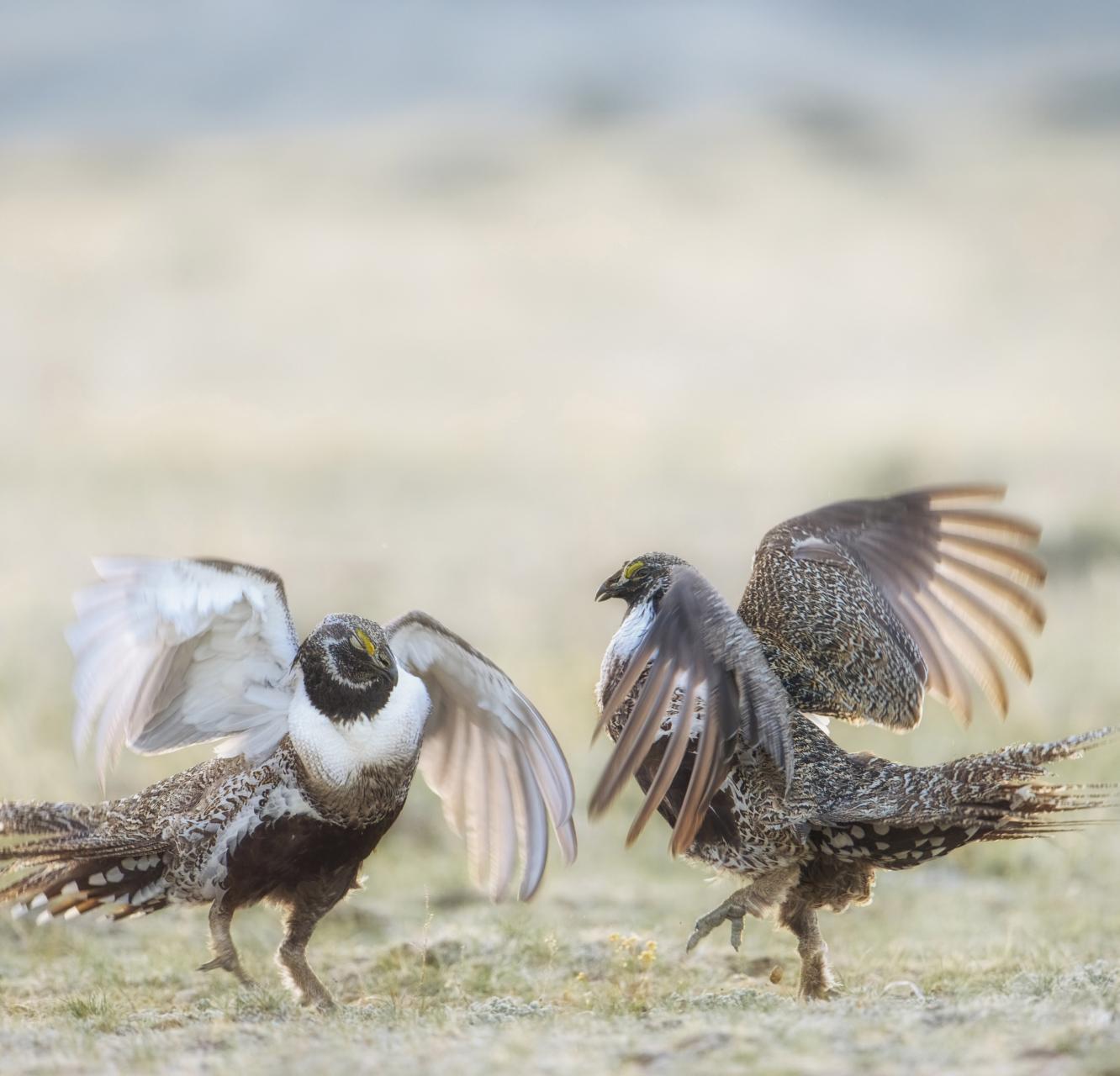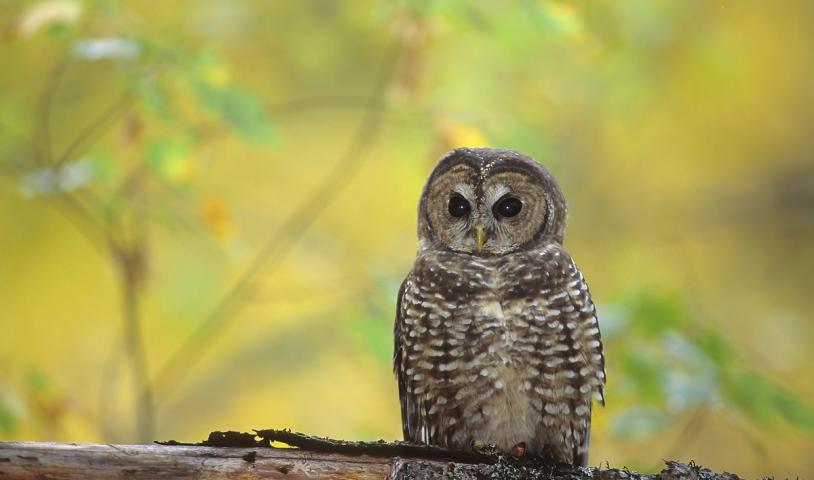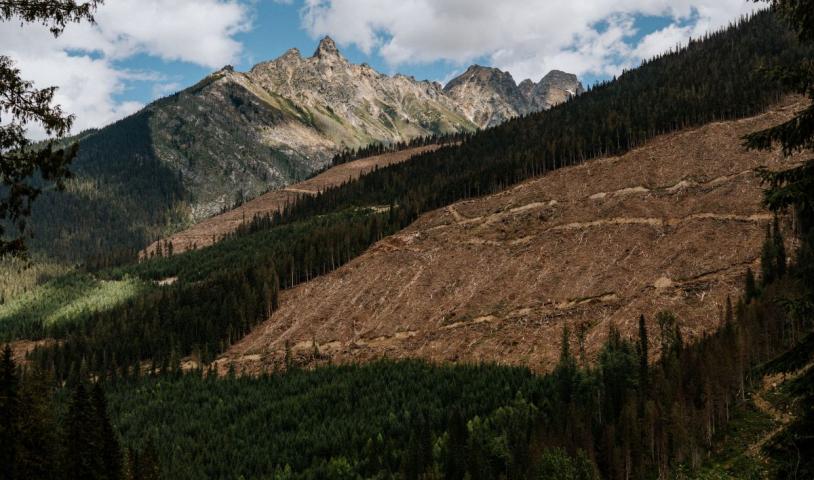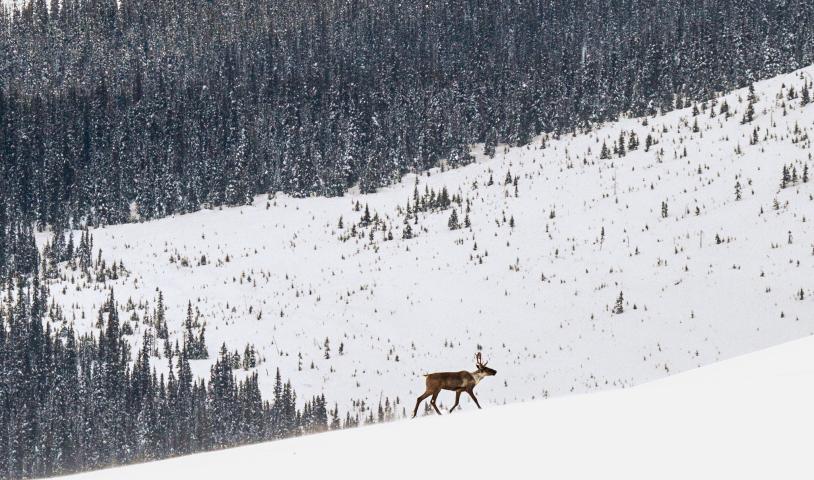Stopping B.C.’s bloody “sport” of grizzly killing
Tuesday, August 22, 2017(A very long essay on the NDP government’s promise to end the grizzly bear trophy hunt.)
“B.C. government putting an end to the grizzly bear trophy hunt,” the news release proudly proclaimed.
The headline spread like lightning, faster than a speeding 300-grain bullet from .375 H&H Magnum. Bullseye.
Super news, indeed.
“Effective Nov. 30, 2017, the British Columbia government will end grizzly bear trophy hunting throughout the province and stop all hunting of grizzlies in the Great Bear Rainforest…Minister Doug Donaldson announced today.”
B.C.’s estimated 15,000 magnificent Ursus arctos horriblis will finally get some serious protection. Fantastic.
But as the song goes, then he had to go and spoil it all by saying something stupid like “I love you”…to the bear butchers.
“While the trophy hunt will end, hunting for meat will be allowed to continue.”
Say, what? Seriously?
Yup. It shouldn’t come as a surprise to anyone following the issue.
The new policy not only honours the NDP’s platform commitment to “ban the grizzly bear trophy hunt”. It is also consistent with the party's answers to a series of questions last December about its position on that issue.
“This is not about being opposed to hunting,” the party said. “This is about being opposed to the grizzly bear trophy hunt and only the grizzly bear trophy hunt.
“B.C. hunters will continue to have the opportunity…to harvest grizzly bear utilizing the entire bear. [Emphasis added.] We will ensure we use science-based decisions to determine the numbers of [Limited Entry Hunt] tags allowed in various areas. If there aren't enough bears there won’t be a hunt and vice versa.”
If anything, that answer is difficult to reconcile with the minister’s promise that "Hunters will no longer be able to possess the hide or the head or the paws of the grizzly bear."
The B.C. Wildlife Federation has slammed the NDP’s new policy as being “inconsistent with the North American Wildlife Conservation Model, which stipulates harvested wildlife should be used for legitimate purposes, including retrieving the fur and meat where usable. Requiring hunters…to throw useable portions of their harvest away is wasteful and inconsistent with sustainable use.”
What to do with those “trophy” bear parts is unclear at this point. Regardless, the trophy that grizzly hunters probably most fundamentally covet won’t be effected by the new policy.
They will still be able to take pictures and videos of their trophy kills.
That is their crucial takeway, to prove they did it, to celebrate their “prowess”, and to forever preserve their kills in living colour, as testaments to their virility, skill, courage, and respect for their noble victims. Gag me.
As B.C. Green party Leader Andrew Weaver rightly noted, it is tough to see how the NDP’s new policy will fully appease the concerns of anyone.
It does not oblige the grizzly killers to pack out the dead animals' meat to their personal homes, regardless of where they live, as Weaver’s private member’s bill proposed in 2015 and as he advocated in the Straight.
Even including that provision would go a long way to dramatically discouraging the trophy hunt, particulary for international hunters. It would be damn impossible, in fact, to pack that grizzly meat home to most other countries.
Too bad the B.C. Greens did not even mention that issue in their 2017 election platform.
Even worse is that Greens did not get a specific commitment on how to effectively end the grizzly trophy hunt in their confidence and supply agreement with the NDP. Had they done that, the government may well have gone much further than it did.
Grizzlies will continue being executed in B.C.
Since 1977, roughly 11,000 grizzly bears have been legally executed by hunters in B.C. The mind boggles.
Somewhere in the world, there are 11,000 grizzly bear rugs stretched out the floor, or hung on a wall, along with so many heads and artfully mounted bear paws and other parts. Somewhere, people are actually wearing grizzy bear teeth and claws, strung on necklaces.
And that’s called “using the whole animal”. “Look what I killed!” those parts happily exclaim to their owners. To many of the rest of us, they just scream, “you fucking idiot!”
To kill—sorry, “harvest”—a grizzly bear, resident hunters need to apply for a Limited Entry Hunt authorization that is awarded by lottery. About 3,000 “lucky winners” are awarded LEH tags every year.
Grizzlies are one of eight species that require an LEH authorization for B.C. residents, who account for 60 percent of the allocated “harvest”. The other 40 percent is allocated to registered guide outfitters.
All nonresident hunters are required to be accompanied by a bona fide guide outfitter or by a resident who holds an Accompany to Hunt Permit.
Last year, 161,364 resident hunter applications were filed and 25,282 authorizations were issued—roughly a one in six chance of hitting the “jackpot”.
Of the 230 grizzly bears executed by hunters that year, resident hunters killed 164 and nonresident hunters killed 66. The nonresidents’ odds of killing a grizzly with the mandatory help of a guide outfitter are way higher than the odds of “success” are for typical resident hunters.
Just ending the nonresident grizzly slaughter would be a welcome and reasonable improvement on the NDP’s too timid steps in the right direction. The government could do that in a heartbeat, if it wanted to, if British Columbians make enough political noise.
What B.C. really needs is a complete and total end to grizzly hunting across the province, except to the extent that it is required for protecting and respecting Aboriginal people’s constitutional rights and title.
That is what many environmental organizations and biologists have been calling for many years.
The B.C. government’s own 1995 British Columbia Grizzly Bear Conservation Strategy envisioned closing its proposed grizzly management areas to “hunting of all grizzly bears”.
A 2004 study of the Scientific Criteria for Evaluation and Establishment of Grizzly Bear Management Areas in British Columbia argued that those GBMAs should be “fully protected from all ecologically damaging human activities and allow no grizzly bear sport hunting”. [Emphasis added.]
That was also the conclusion of the Grizzly Bear Foundation’s recent Board of Inquiry.
After months of consultation and study, that outstanding private sector review implored the provincial government just last February to “Terminate all hunting of grizzly bears in BC.”
Today, 42 of B.C.’s 56 grizzly bear population units are still open to grizzly hunting, not including the NDP’s announced closure for the Great Bear Rainforest. Only nine of those units are closed due to populations deemed to be “threatened”. A further five units are closed due to small population sizes or other considerations.
All of them should be off-limits to non-Aboriginal grizzly hunting. Full stop.
Rest assured, that battle is far from over.
More work needs to be done
The NDP’s welcome commitment to spend the fall consulting with “First Nations and stakeholder groups to determine next steps and mechanisms on implementing its new policy" essentially ensures that the larger fight to ban all nonIndigenous grizzly hunting has really only now just begun.
As the government acknowledges in respect of its announcement, banning the grizzly trophy hunt obviously entails a cost, to mitigate impacts on individuals, businesses, and communities. But it’s not an insurmountable challenge or cost.
For now, the organizations and individuals that have led the fight to end the grizzly trophy hunt in B.C. should be ecstatic that their efforts have at least paid off in getting the province to formally embrace that imperative.
There is much work to be done in helping the government implement and fully execute its laudable objective.
There will be no shortage of highly dedicated, expert voices at the table, to ensure that is done and enforced as well as possible, as one of only several urgently needed strategies to improve grizzly bear and other wildlife management in B.C.
Aboriginal leaders, including Coastal First Nations, have all long led that charge. So many environmental groups, like the Raincoast Conservation Foundation, the David Suzuki Foundation, Pacific Wild, the Wildlife Defence League, Wildsight, the Valhalla Widlerness Society, and the Wilderness Committee, and Sierra Club B.C. have all fought the good fight.
Other incredible champions, like grizzly advocate Trish Boyum, Barb Murray’s nonprofit initiative Bears Matter, the Commercial Bear Viewing Association, and Michael Audain’s Grizzly Bear Foundation all worked tirelessly to save the bears.
Not just for the bears’ sake, but also for the sake of our economy and for the sake of fostering greater human appreciation, understanding, and firsthand knowledge of B.C.’s grizzlies and their natural habitats.
They rightly highlight the seminal study by Stanford University and the Center for Responsible Travel on the economic impact of bear viewing versus bear hunting in the Great Bear Rainforest.
It found that bear viewing generates 12 times more visitor spending and 11 times more government revenue than grizzly hunting. It is vastly more beneficial than hunting those animals to B.C.’s economy.
More importantly, it leaves bears alive, so that they can be repeatedly seen and appreciated by countless tourists and residents. And also, so that they can propagate, to secure the sustainable health of those grizzly populations that make B.C. unique in the world.
Ecotourism accounts for about $1.5-billion of B.C.'s $13.8-billion per year tourism sector, according to the Wilderness Tourism Association of B.C.—exponentially more than all forms of hunting.
Even the Guide Outfitters Association of B.C. (GOABC) estimates that nonresident grizzly bear hunters only generate “an additional revenue of between $1.32 and $2.75 million annually”. It’s not much, considering those particular trophy hunters account for almost 30 percent of all grizzly bears lost to state-sanctioned human predation.
The grizzly trophy hunters love to trumpet the great contributions to habitat and species “conservation” that their collective costs of killing yield for B.C. Those revenues for wildlife “protection” are the boasts of trophy hunters who, it seems, mostly value those animals’ lives for the “joy” of snuffing them out.
The GOABC says that some 5,000 nonresident hunters come to B.C. each year, who generate $120 million annually. That’s peanuts in terms of our $280-billion economy.
The government claims that the grizzly bear hunt generates between $6.12 million and $7.55 million each year, with approximately $4.8 million from resident hunters and another $1.32 million to $2.75 million from guide outfitters.
The hunting industry also boasts that it generates $7.3 million annually in licence fees and another $2.25 million in surcharges that are paid directly to the Habitat Conservation Trust Foundation, which funds land acquisition for habitat conservation and protection.
How precious.
Grizzly bear and other trophy hunting accounts for only a fraction of that amount, which in any case, would be easy enough to more than offset if the NDP decides to treat those imperatives like the priorities they are.
What is a grizzly bear’s life really worth to the government of British Columbia?
If you are a resident hunter, the price is $32 for a basic hunting licence, $80 for a grizzly species licence, and $6.30 for a Limited Entry Hunting draw application.
If you are a non-B.C. resident, the basic license is $75 for a Canadian, $180 for residents of another country, and a “whopping” $1,030 for a grizzly species licence.
Pathetic, really. It’s a puny price for such a majestic and precious creature’s life, which grizzly hunters pay to end after as little as two years on this planet, when they might otherwise typically survive for 20 years.
Although if you are a guide outfitter, a grizzly’s life if worth very much more. Typically they charge at least $13,000 to $27,000 for a guided grizzly bear hunt and they collect gross annual revenues from all hunting activities of anywhere from $100,000 to $800,000 annually.
That ain’t chicken feed. It’s serious blood money. Which is why the Guide Outfitters are so exercised about the NDP’s new policy. “More bad news for rural B.C.” they cry—as if they are the only ones living on that part of the planet.
At a minimum, large game hunting fees for any species is way too low, I’d say, especially for grizzly bears.
Such issues as these should make for a great debate as the government engages in its “broader consultation process on a renewed wildlife management strategy for the province".
The government has said that the “key elements of that strategy will include dedicated funding for wildlife and habitat conservation and a collaborative process in developing short and long-term plans for wildlife resources.”
Good stuff. We need much more of that, as the NDP so forcefully advocated in opposition.
But what dedicated funding? A greater proportion from the $7 conservation surcharge from basic hunting licence fees that now goes to the Habitat Conservation Trust Foundation? Maybe 100 percent of all hunting license fees and revenues, as the B.C. Liberals suggested?
Who will control that money? Will the NDP continue with the uncertain privatized model of wildlife funding management that was the B.C. Liberals’ parting gift to the industry?
Or will it do the right thing and immediately kill that plan to transfer wildlife management from the government to a separate agency funded by hunting licence revenues, potentially supplemented by donations from private interest groups?
It is not in the public interest—or in animals’ interests—to create that independent agency that would not be directly accountable to British Columbians.
It is not in B.C.’s interest to cede control of wildlife management, in whole or in part, to an industry-controlled agency that would be even more susceptiable to the influence of special interest groups that are largely controlled by the hunting industry.
More fodder for discussion this fall, no doubt, as the NDP executes its new policy.
And what of the added wildfire risk that the grizzly hunt might add in this record-breaking wildfire season? The hunt is already underway in the Peace, with grizzly hunts in other equally bone-dry regions set to begin in September.
The government needs to rapidly ascertain the incremental threat that the grizzly trophy hunt might pose for those regions, along with other hunting and backcountry activities.
Just one wildfire accidentally started by a trophy hunter could easily negate any economic value that this fall’s grizzly hunt might produce. Why risk it?
B.C. Liberals moved too quickly in 2001
The first step the Horgan government really should take is to restore the provincewide moratorium on grizzly bear hunting that Ujjal Dosanjh’s NDP government had put in place on the eve of the 2001 election.
Only a month after it was first elected in 2001, the Campbell government lifted that provincial moratorium. It replaced it with a handful of regional moratoriums in especially threatened areas, and otherwise allowed the grizzly hunt to resume, while a technical review of grizzly populations was also initiated.
That was a big mistake.
Indeed, I feel more than a little twinge of guilt for not having been more forceful in trying to oppose that misguided decision when I was in the premier’s office.
I am ashamed to admit, it was not an issue that much concerned me at the time, to the extent that I was even aware of it in the midst of the myriad of changes that were made in that government’s first 90 days in office. Sometimes, doing too much, too fast is a recipe for imprudent action, as that example showed.
In fact, it was of so little consequence to that B.C. Liberal government, it barely generated any internal discussion or reasoned debate. It was an ideological knee-jerk reaction to an NDP policy that was reviled by many rural Liberal supporters and MLAs. And it was a sop to that party’s donors and backers as well.
There is good reason to restore that provincial moratorium today, at least pending a clear and carefully considered process for implementing the NDP’s new policy.
British Columbia should do as Alberta did back in 2006, when it suspended all grizzly hunting. It did that to allow for a better population assessment.
That suspension is still in force, thank god. Only about 700 to 800 grizzly bears were still living in Alberta 10 years ago. That fact also finally obliged the province in 2010 to classify grizzlies as a threatened species.
In contrast, B.C.’s grizzly populations have ostensibly remained fairly stable in recent decades. So saith the government-commissioned scientific reviews from 2016, 2003, and 2004. The B.C. Conservation Data Centre lists grizzly bears as S3 (Vulnerable).
In 2012, the federal government’s Committee on the Status of Endangered Wildlife in Canada designated Canada’s western grizzly population as being of Special Concern, meaning that the species may become threatened or endangered.
It said this:
“Population estimates in much of the range are highly uncertain; the Canadian population is estimated at 26,000, but the number of mature individuals is uncertain and could be close to 10,000.
“While there is no evidence of a decline in the overall population during the past 20 years and increasing numbers of records indicating some range expansion in the north, a number of populations in the southern extent of its range in Alberta and southern BC are known to be declining and there are concerns about unsustainable mortality rates there and in parts of Yukon.
“There is strong evidence of genetic fragmentation in the southern parts of its range where some populations are increasingly isolated and subject to demographic stochasticity. Their poor condition in some parts of the range, combined with their naturally low reproductive rates and increasing pressures of resource extraction and cumulative impacts in currently intact parts of the range, heighten concern for this species if such pressures are not successfully reversed.”
B.C. Natural Resources Minister Doug Donaldson made it clear in his announcement that growing concerns about the reliability of provincial grizzly population estimates was not the motivation for the Horgan administration’s new ban on grizzly trophy hunting.
"It's not a matter of numbers, it's a matter of society has come to the point in B.C. where they are no longer in favour of the grizzly bear trophy hunt," he stressed.
The reliability of the province’s numbers remains to be seen, despite Donaldson’s apparent confidence in the government’s procedure manual for estimating grizzly bear populations.
One scientific study from 2013 concluded that government management models might be dramatically underestimating grizzly mortality rates, throwing the estimated population numbers off by 70 percent or higher.
A 2016 technical report found that the grizzly population in the South Rockies declined by 44 percent from 2006 to 2013. Hunting accounted for about one-third of the 116 grizzly bear deaths in that region, as it accounted for 91 percent of the 44 recorded kills in the adjacent Flathead region.
The real acid test will be the provincial auditor general’s forthcoming report.
That audit will determine whether the government is meeting its objective of ensuring healthy grizzly bear populations throughout B.C. It will also assess the former government’s planning and activities in that regard, as well as its public reporting on the effectiveness of grizzly bear management.
Depending on the results of that review, it may add even more weight to a provincewide suspension of all grizzly hunting.
We don’t really have a clue about the effects that climate change may pose to grizzly habitats and seasonal food supplies. That, too, should be quantitatively studied and anticipated through appropriate policy responses.
Advertising is also an issue
In the meantime, we also need to think long and hard about how the grizzly hunt and other trophy hunts are being reflected in government publications, and how they are impacting our provincial tourism brand.
A case in point: the NDP should immediately act to end all commercial advertising on the government’s Hunting & Trapping Regulations Synopsis.
It is outrageous that the former government abused that forum to collect a few bucks from gun sellers, pro-hunting groups like the B.C. Wildlife Federation, taxidermists, guide outfitters, and others.
The current guide even features pictures of hunters proudly posing over their kills. It’s disgusting.
Just like the Liberals’ wild west campaign finance system, this trend towards interest-group promotional advertising in government forums and publications is unacceptable.
It makes it look like the government is being bought and paid for by the very organizations and entities it is regulating.
Just stop it. Now.
The Cariboo-Chilcotin Coast tourism regions also has a large full-colour “Super, Natural British Columbia” ad in that publication.
For too long, Destination B.C. (formerly Tourism B.C.) has played fast and loose on how trophy hunting and hunting in general fits into its vision for B.C. tourism.
That entity’s current 32-page industry strategy document only has one reference to “hunting”. It is mentioned as a single throwaway word in a string of other listed recreation activities.
There is no reference at all to trophy hunting, and certainly no pictures of dead grizzlies or other trophy game. That’s good.
Destination B.C. has properly shunned advertising the “sport” of animal killing in its international advertising, hoping to avoid the controversy that would rightly follow such shameful promotion of wildlife bloodletting.
Obviously any form of grizzly hunting is utterly incompatible with B.C.’s iconic global tourism brand and slogan. Which is why Destination B.C. so often features pictures of beautiful live grizzlies, and rightly promotes them as ecotourism and Aboriginal tourism draws, in wildlife viewing.
On the one hand, B.C.’s top provincially funded tourism agency quietly embraces those partnerships with trophy hunters, as it also indirectly celebrates their “contributions” in promoting the economic impacts of B.C. tourism.
On the other hand, the industry’s chief marketing arm is rightly too ashamed to even acknowledge, let alone promote trophy hunting—or virtually any other form of hunting. It essentially masks the sad reality of trophy hunting and tries to pretend that it is not really part of B.C.’s formally sanctioned tourism “experience”.
Let’s just stop the “now you see it, now you don’t” games.
It’s time the B.C. government officially rejected trophy hunting and wildlife killing as a publicly sanctioned feature of Super, Natural B.C.
Government policies and tourism funding should reflect that position.
Tobacco is also legal; but it’s evil. So is trophy hunting, in my humble opinion, regardless of which species’ lives are at issue. Both are merchants of avoidable death.
According to an Insights West poll from 2015, 91 percent of British Columbians oppose “hunting animals for sport (trophy hunting)”. Some 75 percent are strongly opposed, with 93 percent opposition among those living outside of Metro Vancouver or Vancouver Island.
The minister’s comment above also acknowledges that the ban on grizzly trophy hunting is essentially a populist and political imperative that is grounded in ethical judgements, as much as it is any concern about grizzly populations.
I agree. Let’s extend that value judgement to all forms of trophy hunting.
Killing mountain sheep, mountain goat, bison, caribou, elk, moose, deer, grizzly bear, black bear, cougar, wolf, bobcat, lynx, wolverine, or any other “trophy” species—simply for their hides, antlers, heads, paws, teeth, claws, or stuffed bodies—is barbaric and reprehensible.
What really happens to bear meat?
Obviously, some of those species are legitimately hunted as well, primarily for meat, which is defensible enough, if it is actually eaten. Deer, moose, and other species are staples in many hunters' diets and I am not proposing to change that. Far from it.
But many of those animals, including grizzlies, are not killed for food. Not really. And everyone knows it.
Rather, those prized animals are slaughtered for the sick satisfaction of stopping their beating hearts with a high-powered rifle or bow.
Because, you know, those trophy hunters so “respect” those great beasts they live to love, and shoot dead. And because those species are so rare or elusive.
It’s not really just about the trophies, they contend, in reverence of their handiwork.
No, it’s also about the meat. It’s about sustenance.
Because its better to kill something wild with your own Ruger M77 Compact Magnum than it is to have the dirty work done by others.
Because bear meat tastes so “delicious” when it is sufficiently masked and properly cooked to kill the trichinosis that so many bear corpses are riddled with. After all, any “bear chef” worth his or her salt knows how to prevent the dead beasts from exacting their revenge on the species they would have happily eaten.
No, nothing will convince me that grizzly trophy hunters are remotely interested in filling their bellies with so many pounds of foul-tasting bear meat. I highly doubt that most Aboriginal families like the stuff any better their non-Aboriginal neighbours, who generally would not thank you for it.
The vast majority of grizzly hunters likely dread the “meat problem”—what to do with it, how to store it, the cost of professionally butchering it, and so on. I just don’t believe they hunger for grizzly bear meat.
I think they really only hunger for the “great thrill” of the kill that so many Great White hunters like Clyde Ormond have exalted.
The worst ones hunger for blood, as this horribly disturbing video showed the world. It was one of several videos posted on the Wildlife Defence League’s site, including Jane Goodall’s passionate appeal. It should give any grizzly trophy hunter pause to reflect.
Indeed, the whole sordid business should give us all pause to think about how we got here, and why it is so politically hard to do the right thing. Two words spring to mind: “gun lobby”.
I am so sick of the pious and disingenuous arguments that trophy hunters’ advance through their institutional mouthpieces, like the American-based Safari Club International (SCI).
It’s not really just about the trophies, they contend, in reverence of their collective handiwork.
Groups like the SCI say that with a straight face, as their members’ blogs and social media sites proudly showcase the lifeless bodies of the formerly fearsome creatures they sacrificed to the vanity of their own “higher beings”.
Now the SCI is trying to rally its supporters in response to a Vancouver Sun online poll that asks “Are you happy with the NDP plan to ban grizzly trophy hunt?”
That unwelcome intrusion from a foreign lobby group, comprised of nearly 50,000 members in 170 chapters across the globe, makes my blood boil. Butt out of B.C., I say.
As that group brags, “Since 2000, SCI has spent $140 million on protecting the freedom to hunt through policy advocacy, litigation, and education for federal and state legislators to ensure hunting is protected for future generations. Through direct involvement and partnerships with like-minded organizations, SCI has become a political force in Washington, D.C. and other world capitals.”
No kidding. And now it has British Columbia’s new government in its crosshairs.
So far, just over half of the Sun poll’s nearly 14,000 respondents voted “Yes—Killing bears for sport is senseless”. The balance voted “No—A lot of people depend on the hunt to make a living.”
Something tells me that most Straight readers would not only strongly reject grizzly trophy hunting, they would also oppose all trophy hunting in B.C.
I expect most people would strongly support a ban on killing grizzlies for meat or for any other supposed purpose, to the extent that Aboriginal people’s constitutional rights and title are also duly protected and respected.
We have all seen the grizzly images of the trophy hunters, triumphantly hovering over the lifeless forms they so expertly extirpated, in some twisted, elemental “honouring” of the majestic creatures that only moments before roamed wild and free.
The bloodied bears we don’t see are the ones that are mortally wounded and “got away”. The ones who crash on for miles, to eventually escape their “responsible” pursuers, only to die in agony, hours or days later, much to those hunters’ sincere chagrin.
Why? Why would anyone want to even risk doing that for “fun”? I don’t get it.
I can only conclude they do it for the hunt itself and for the great tales of adventure those experiences yield, suitably immortalized with pictures and other evidence that they cherish as trophies of their wanton destruction.
Denying them their prized material trophies—the bearskin rugs, mounted heads, and fearsome paws—will likely reduce some of the impetus for grizzly trophy hunts.
It will certainly make B.C. far less welcoming to would-be trophy hunters posing as meat hunters. And all that is good. I certainly don’t mean to knock the Horgan administration for taking such important and emphatic action to make that happen.
But as long as those hunters are allowed to take and keep pictures of their “spectacular” deeds, the trophy hunt will continue. Especially if they can pay someone else to effectively dispose of the carcasses, with no requirement to pack the meat home.
With no restrictions on who they can give that meat to, or what they might choose to do with it—before or after it ever enters a freezer. With no requirement to prove that meat taken as such is ever actually properly stored and used for its supposed intended purpose.
All food for thought and discussion, as it were, of which there will be much in the coming months.
We should not fear to engage in that debate as if it’s a matter of life and death. Because it literally is for the grizzlies.
Time to get vocal, if you care, to keep the NDP’s feet to the fire, as they go about executing a very fine and long overdue policy commitment that can only stand to get better.
Martyn Brown was former B.C. premier Gordon Campbell’s long-serving chief of staff, the top strategic adviser to three provincial party leaders, and a former deputy minister of tourism, trade, and investment. He also served as the B.C. Liberals' public campaign director in 2001, 2005, and 2009, in addition to his other extensive campaign experience, and he was the principal author of four election platforms. Contact Brown at towardsanewgovernment@gmail.com.
Read the full article here
